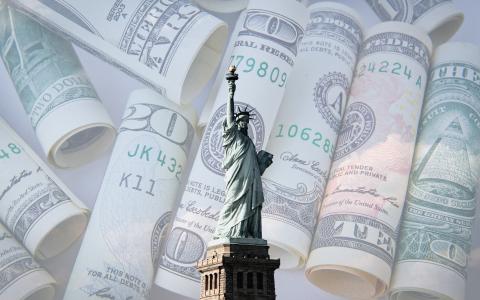
In an enlightening episode of "The Rich Dad Radio Show," Robert Kiyosaki, a renowned financial educator and author, raised alarm bells about the United States' precarious financial situation. He starkly declared, "America is now bankrupt," prompting a crucial inquiry into how a nation once celebrated as the wealthiest in the world has reached such a dire fiscal state.
Although the U.S. hasn't formally announced bankruptcy, Kiyosaki's commentary brings into sharp focus the escalating debt crisis facing the country. As of late November, the national debt of the U.S. soared to a staggering $33.8 trillion. Jim Clark, the CEO of Republic Monetary Exchange and a guest on the show, pointed out that when factoring in liabilities like entitlements, the figure could be alarmingly closer to $200 trillion.
The fiscal year 2023 witnessed a 39% surge in interest payments on this debt, reaching $659 billion—a figure that's nearly twice what it was in fiscal 2020. This worrying trend highlights the growing fiscal burden on the nation's economy.
In light of these unsettling financial developments, Kiyosaki has taken a firm stance on protecting his wealth through tangible assets, notably gold and silver. He attributes the start of America's financial woes to the 1971 abandonment of the gold standard and views these precious metals as crucial defenses against inflation and currency devaluation. The increasing industrial demand for silver and the relatively low prices of gold and silver, especially compared to their historical peaks, underscore their appeal.
Additionally, Kiyosaki appreciates that physical gold and silver are free from counterparty risks, a notable advantage over many other investment forms. Expanding beyond precious metals, Kiyosaki strongly endorses real estate investment. He cites his ownership of 15,000 houses as a strategic inflation hedge.
Historical data from the Federal Reserve Bank of St. Louis corroborates the wisdom of this approach: since 1963, while the consumer price index has climbed by 896%, the median sales price of homes has skyrocketed by 2,353.93%, and rent by 892%. These figures suggest that real estate not only keeps pace with inflation but often surpasses it.
Kiyosaki's strategy is particularly relevant in the context of fractional real estate investing, a burgeoning opportunity that allows average investors to acquire shares in income-producing properties. With entry points as low as $100, this method offers access to rental income and appreciation potential, breaking down traditional barriers like high costs and credit requirements.
For wealth advisors and RIAs navigating these uncertain economic waters, Kiyosaki's approach provides key insights into diversification and risk management. It's crucial to recognize, however, that his strategies might not suit every investor. As always, thorough research and consultation with a qualified financial adviser are essential steps in tailoring an investment strategy to individual needs and contexts.



